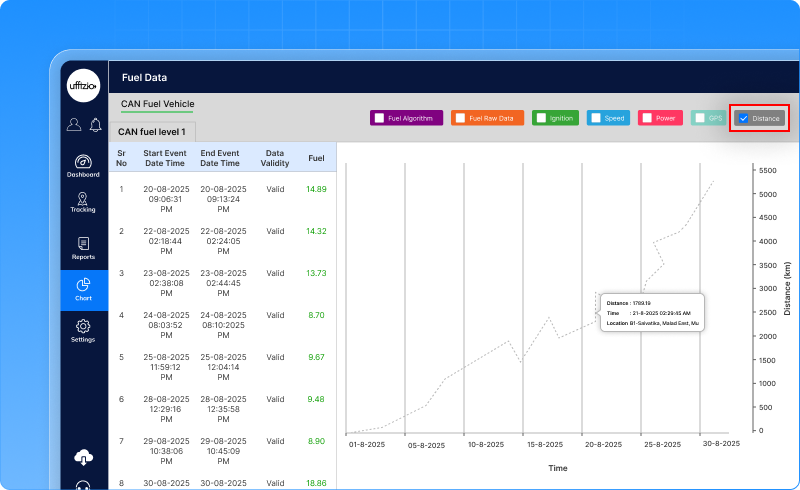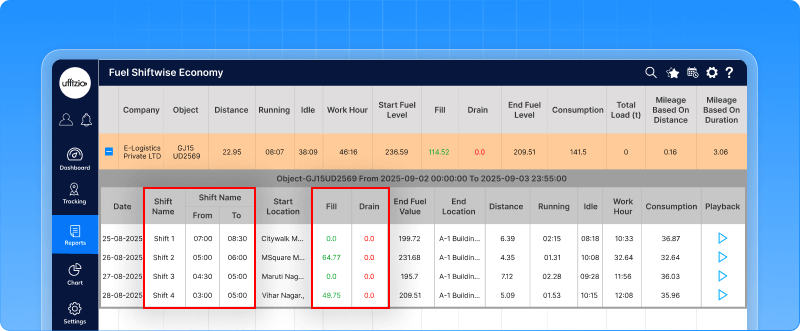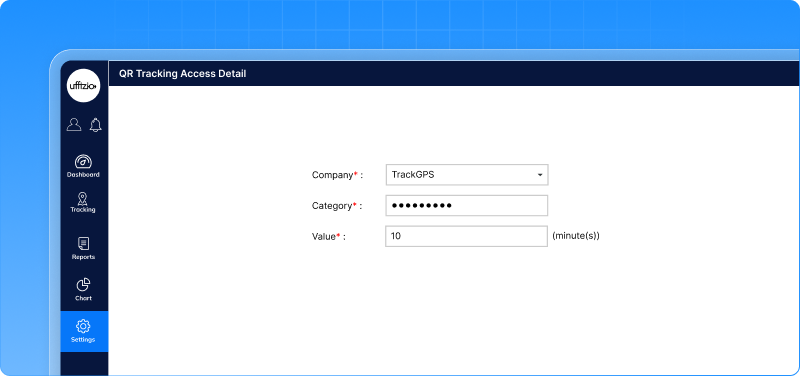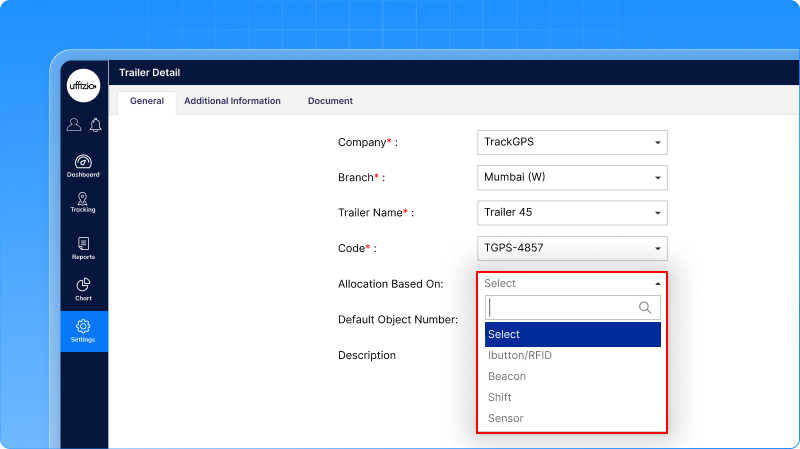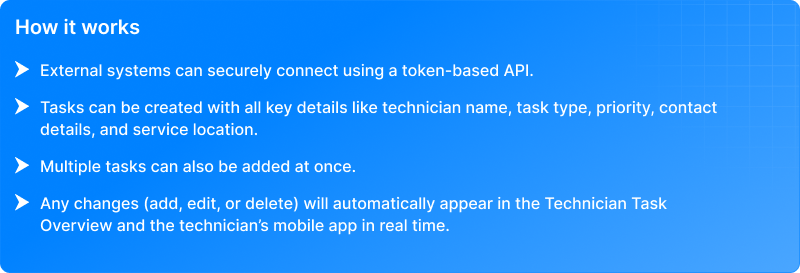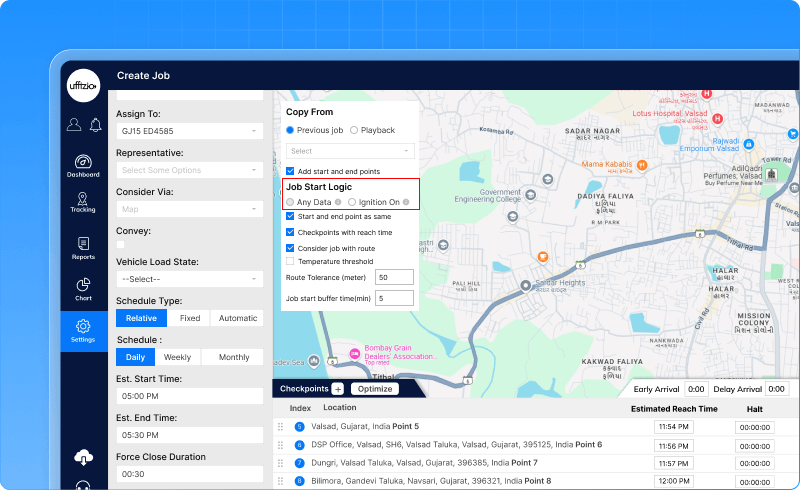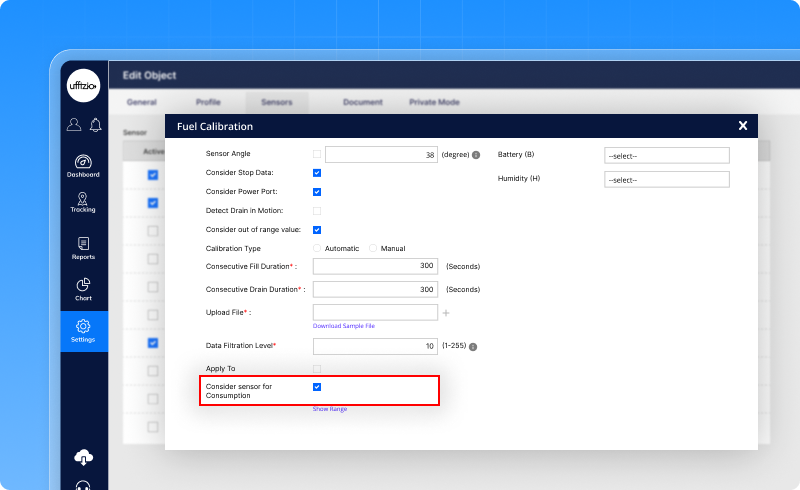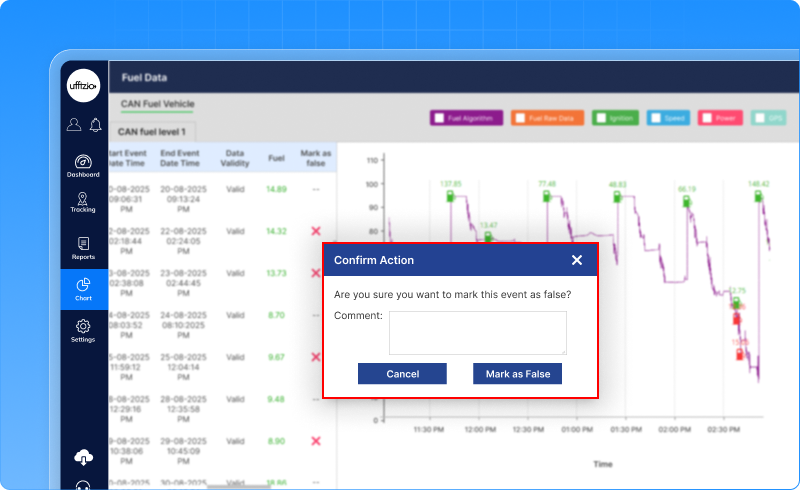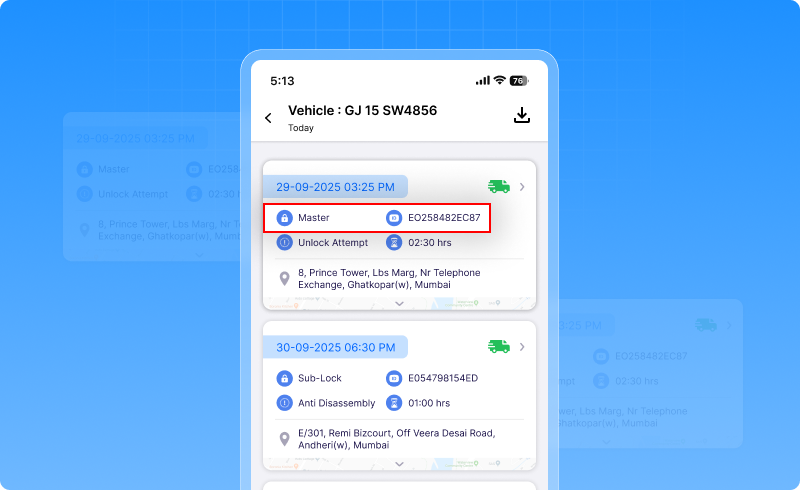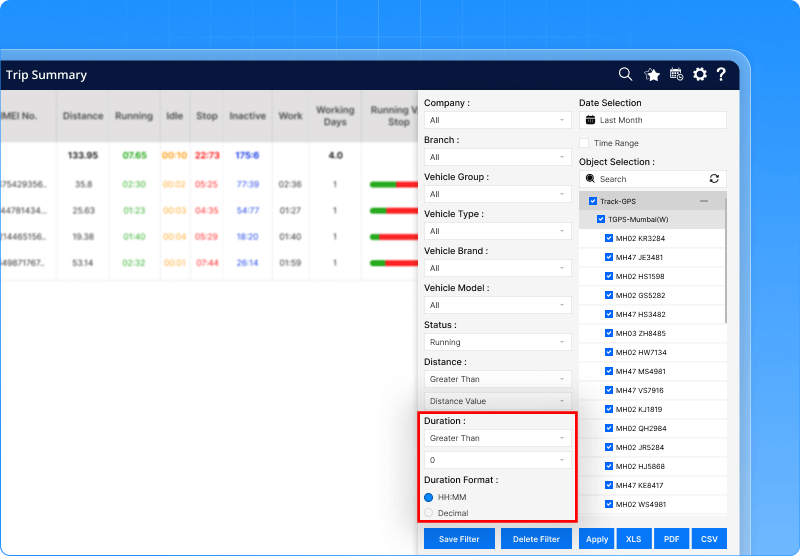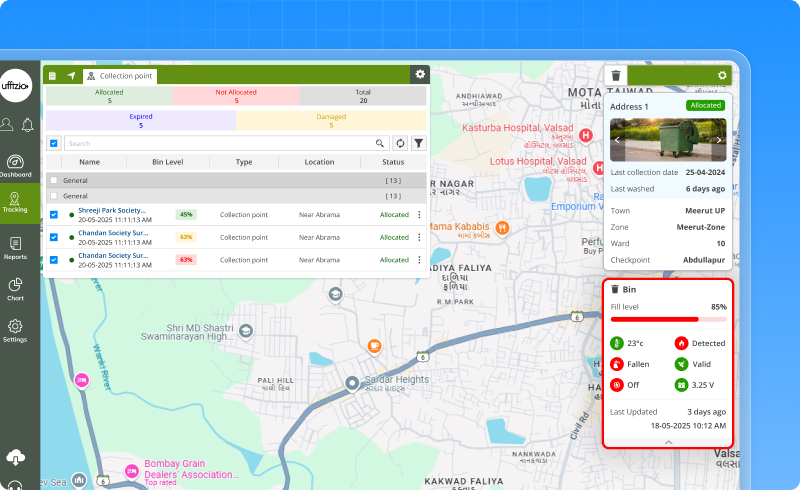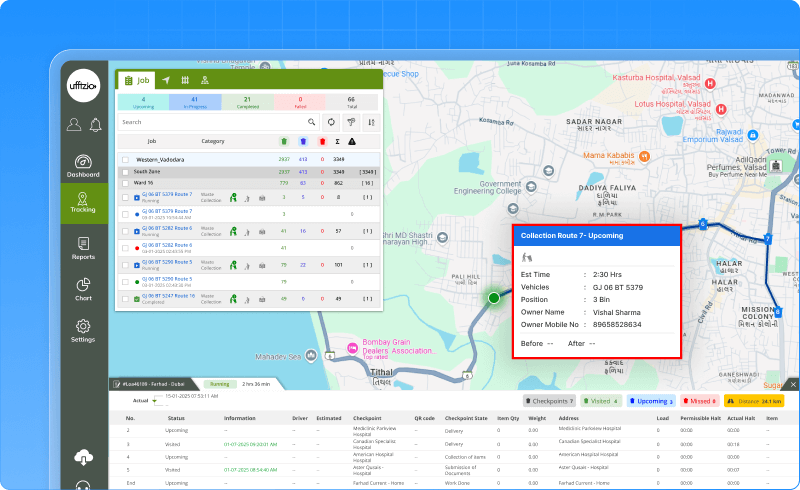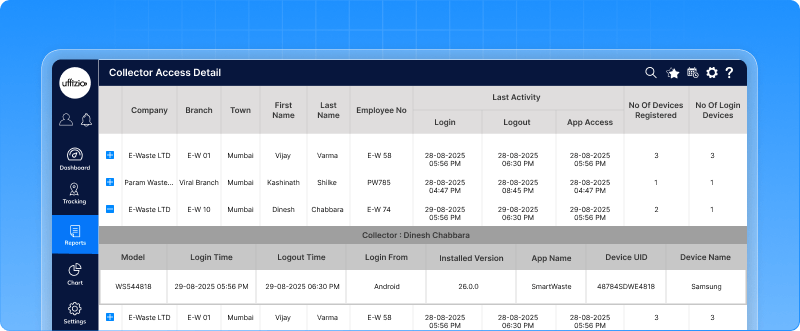What’s New for the Month of August 2025

At Uffizio, we continuously work on making our software smarter, simpler, and more impactful for your business. Every month, we introduce new features, improvements, and enhancements based on client feedback and industry needs. These updates are designed to improve performance, add more flexibility, and make daily operations smoother, whether it’s managing fleets with Trakzee or optimizing waste collection with SmartWaste. Here, you can explore all the latest enhancements we’ve rolled out.
1. Trakzee Updates
1.1 Elock devices can now be unlocked remotely
We’ve added a feature that lets you unlock Elock devices remotely using an easy-to-use API. This is especially helpful in industries like logistics and transport, where assets are locked electronically for security.
Why is this important? Now, instead of manually unlocking each device, you can send a command to unlock it from anywhere — directly through the system.
1.2 Customize API to support multiple IMEIs
We’ve added a new feature to the ADAS/DMS reports API, allowing users to submit multiple IMEI numbers in one request. This will make it easier for users to get event details for more than one vehicle at a time.
Why this matters:
- Saves time by querying multiple vehicles at once.
- Keeps the process user-friendly and secure.
- Provides detailed event data without the need for multiple API calls.
1.3 Distance line in fuel graph
Your fuel graph now shows the distance traveled along with refills and drains. This means you can:
- Instantly spot issues like fuel theft (fuel drop without movement).
- Read reports more clearly with both fuel and distance in one view.
Just switch ON the new distance option in the Fuel Chart to see the line, and tooltips will show the exact distance during each event.
1.4 Shift-Wise fuel economy report
Now you can check fuel usage and mileage per shift (morning, evening, night) instead of only by day or month.
Why this helps:
- See which shift uses more fuel.
- Compare driver or vehicle performance shift by shift.
- Get clearer insights for planning and audits.
1.5 QR code access for Aramco compliance
We’ve introduced a QR code system for vehicles entering Aramco sites. This makes it easy for security staff to confirm that a vehicle’s GPS tracker is active — no app needed.
How it works:
- Each vehicle gets a unique QR code placed on it.
- Security staff just scan the QR code with any phone.
- It opens directly in the browser (no app dependency).
- A basic password/PIN is required for access.
- Once verified, they can see:
- Vehicle’s live GPS location
- The route travelled that day
- Access is time-limited (default 10 minutes).
Why this helps:
- Fully meets Aramco compliance requirements.
- Removes hassle — works in any browser, no app login.
- Keeps operations secure, transparent, and fast at site entry.
1.6 Smarter trailer allocation with analog sensors
Now trailers can also be assigned automatically through analog sensors (in addition to RFID and Beacons). This means if your trailer is identified by an external sensor, the system will instantly detect and link it without manual steps.
Why it matters:
- No need for manual trailer assignments.
- Cuts down on errors and saves time.
- Works seamlessly with external hardware that sends trailer IDs via analog signals.
1.7 Technician task management via API
We’ve added a new API for technician tasks that lets external systems directly add, view, edit, or delete tasks in our application. This makes it easy to sync with 3rd-party tools being used by clients.
Why this helps:
- Smooth integration with other applications.
- Saves time by avoiding duplicate entries.
- Ensures technicians always have the latest tasks on their mobile app.
1.8 Smarter job start with ignition on
Jobs will now start only when the vehicle’s ignition is ON, instead of just any data signal. Fleet managers can choose between:
- Any data: Job starts as soon as the system gets data.
- Ignition on: Job starts only when the engine actually starts after the buffer time.
Why this helps:
- Prevents jobs from starting too early when a vehicle is still idle.
- Ensures reports and playback reflect the real movement time.
- Gives managers more accurate and consistent timelines.
This update makes job start tracking more realistic, reliable, and flexible for your operations.
1.9 Smarter fuel sensor handling for tankers
In some vehicles, like fuel tankers, the installed fuel sensors measure the cargo fuel being transported, not the engine’s fuel usage. Until now, the system treated these changes as “fuel consumption,” which led to incorrect reports. We’ve added a simple checkbox in the fuel settings:
- Consider sensor for consumption (default ON)
- If unchecked, the system will ignore that sensor for consumption calculations.
What it means:
- For tanker vehicles, fuel delivery or transfer won’t be mistaken for engine usage.
- You’ll still see sensor data in charts, reports, dashboards, and APIs — but it won’t distort consumption figures.
- Vehicles with multiple sensors can separate engine fuel consumption from cargo fuel monitoring.
Why this helps:
This enhancement ensures that your fuel reports, alerts, and analytics stay accurate, especially for businesses transporting fuel.
1.10 Fuel event correction option
Sometimes fuel sensors can pick up false refill or drain events due to errors or disturbances. To solve this, we’ve added a new option where users can manually mark such events as “false.”
How it works:
- In the fuel graph, each refill or drain event will now have a “mark as false” button.
- Once marked, that event will be ignored in reports, dashboards, and APIs, ensuring your fuel data stays accurate.
- A correction count will also show how many events have been fixed.
- Every correction is logged in the backend for full audit and history tracking.
Why this helps:
No more confusion or misleading data in your fuel reports. Fleet managers get clean, accurate, and reliable insights — with complete transparency on what was corrected. A new fuel event correction report has been added. This lets you see:
- Which events were corrected
- Who corrected them
- When and why it was done
1.11 Clear identification of sub lock events
Earlier, the Elock violation report only showed whether a violation came from the lock, but it wasn’t clear if it was from the main (master) lock or a sub lock.
With this update, every violation will now show a unique ID for the lock:
- For master lock, the event will appear as usual.
- For sub lock, the report will display the sensor ID/card ID linked to that lock.
This makes it much easier to know exactly which lock triggered the event, whether it was the main lock or one of the sub locks. The improvement gives fleet operators better traceability, transparency, and control in security monitoring.
1.12 Smarter duration filters in travel/trip report
Fleet managers can now quickly spot under-used or over-used vehicles with a new filter in the travel/trip report.
- Under-utilized vehicles → Running less than 40 hours in a month.
- Over-utilized vehicles → Running more than 200 hours in a month.
You can apply this filter for different statuses (running, idle, stopped, inactive) and combine it with existing filters like company, branch, vehicle type, or date range.
Why this is useful?
- Detect vehicles sitting idle too often.
- Identify vehicles that may be overworked and need maintenance.
- Get clearer insights to improve utilization and reduce costs.
These filters also work in exports and scheduled reports, so you always have the data handy.
1.13 Better control over shared location links
We’ve improved the share location API in Trakzee to make it more secure and easier to manage.
- Request ID in response – Now, whenever you create a share location link, the system will generate a unique request ID. This helps you keep track of each shared link individually.
- Manual expiry option – Earlier, a shared link would only expire after the set time (like 1 hour, 1 day, etc.). Now, admins can manually expire a link anytime before it auto-expires.
Why is this useful?
- Extra security: If you’ve shared a link by mistake or no longer want it to be active, you can close it immediately.
- Better control: Each link has its own request ID, so it’s easy to identify and manage.
- Improved traceability: Helps admins track who created which link and ensure links don’t stay active longer than needed.
2. Smartwaste Updates
2.1 Smart bin sensors – smarter way to track waste levels
We’ve made waste monitoring even smarter by introducing Smart Bin Sensors in the SmartWaste system. Now, bins can be fitted with sensors that show how full they are in real-time. These sensors connect directly to the system, giving waste managers clear visibility of bin levels, trends, and alerts.
What it means:
- Smart bin category: You can now add smart bin sensors in the system and link them to specific bins.
- Live fill levels: See if a bin is empty, half-full, full, or overflowing directly in live tracking.
- Bin analytics tooltip: Click on a bin to check live fill percentage, historical data, temperature, fire status, and even the last collection time.
- Real-time alerts: Get notified instantly when a bin crosses the configured limit (like 80% full). Alerts can be seen in-app, through email, SMS, or mobile push notifications.
- Quick actions: Create a collection job directly from the bin status screen if a bin is overflowing.
Why is this useful?
- No more guessing which bins need pickup first.
- Prioritize overflowing bins and optimize collection routes.
- Reduce manual checks with real-time visibility.
- Improve efficiency and respond faster to emergencies like fire or overfill.
2.2 Bin owner details made visible
Now, you can see who owns a bin and how to contact them directly from the system.
- On live tracking: When you click on a bin, along with the usual details (like time, vehicle, and address), you’ll now also see owner’s name and mobile number
- In reports (Excel/PDF): The checkpoint status report will now also show the owner’s name and mobile number next to the collection address.
Why this matters:
- Makes it easy for managers to call the owner if there’s an issue.
- Reports now have complete details for smoother communication.
- Builds better coordination and transparency in daily operations.
2.3 Collector access summary report
We have added a new report in Smart Waste to help managers keep track of their collectors. Now, managers can easily see:
- When a collector logged in and logged out of the app
- Which mobile device they used
- How many times they accessed the app
- Their latest activity details
This report makes it simple to check if collectors are regularly using the app and helps improve transparency and accountability in waste collection. The report can also be downloaded in PDF or Excel for record-keeping.

